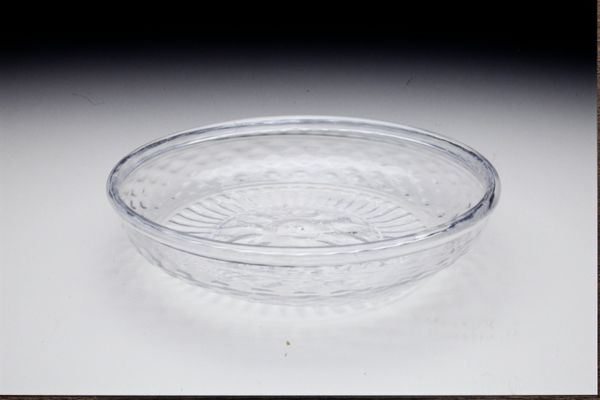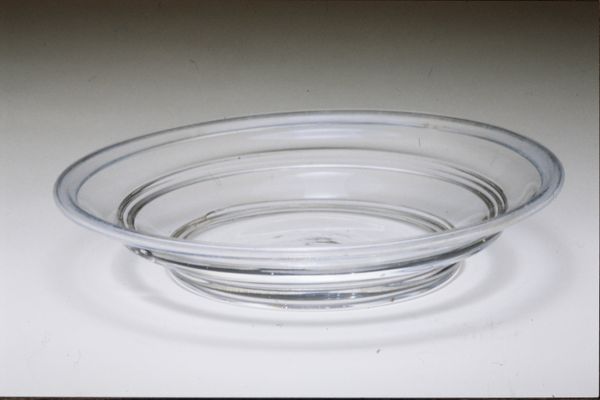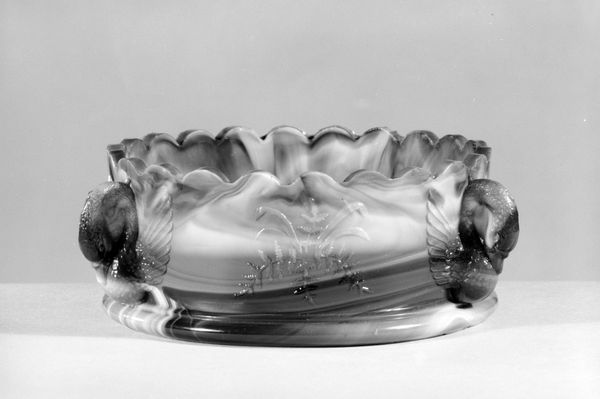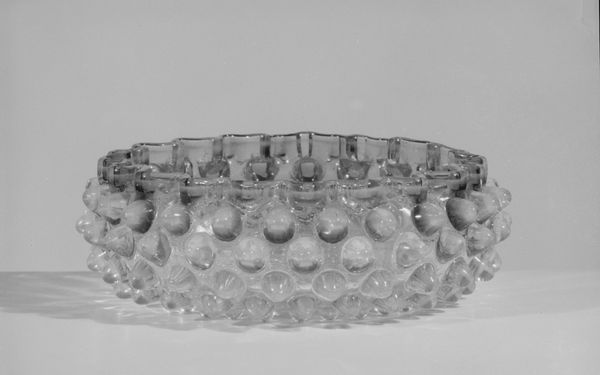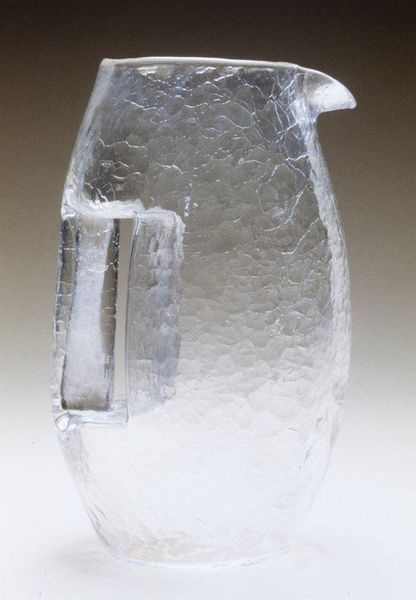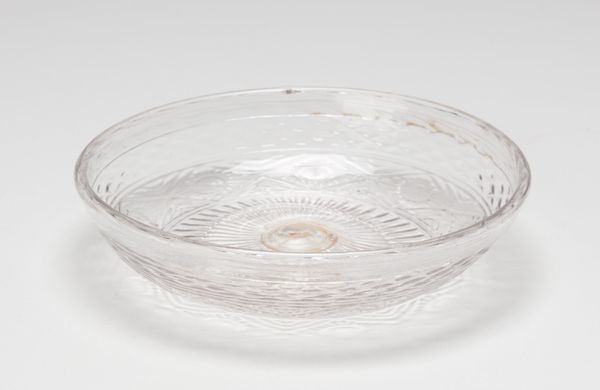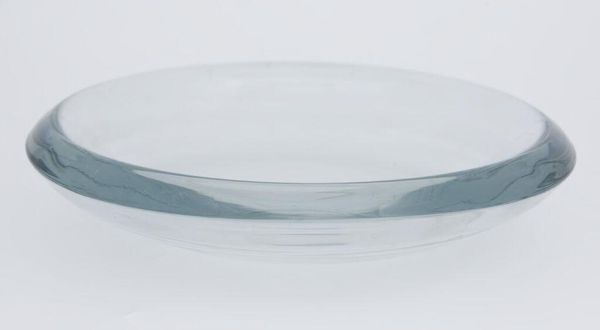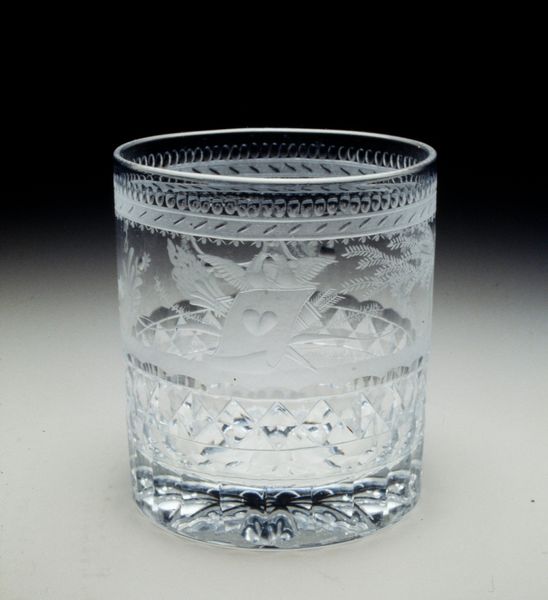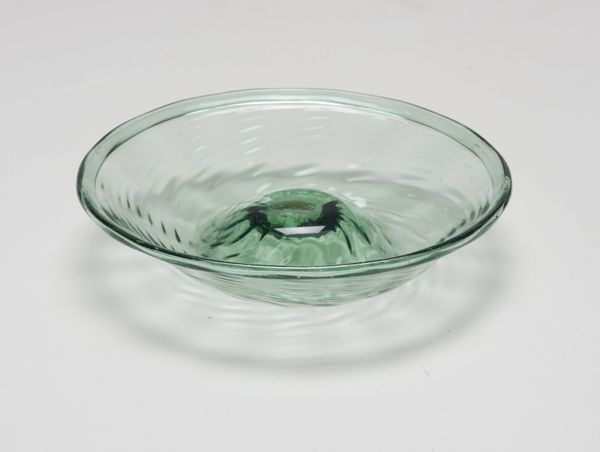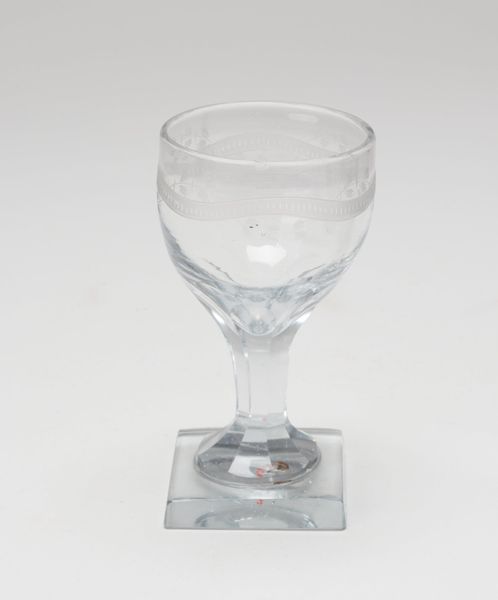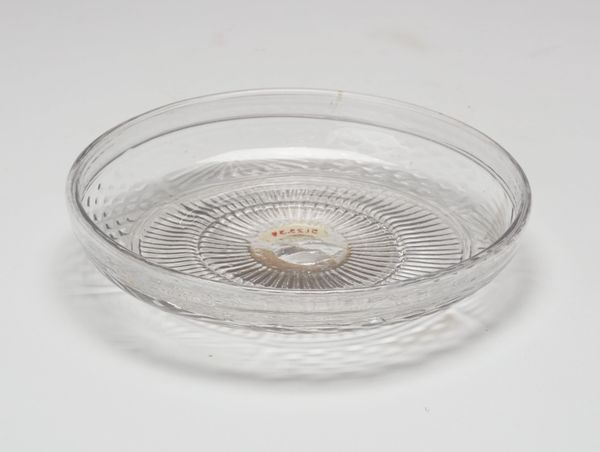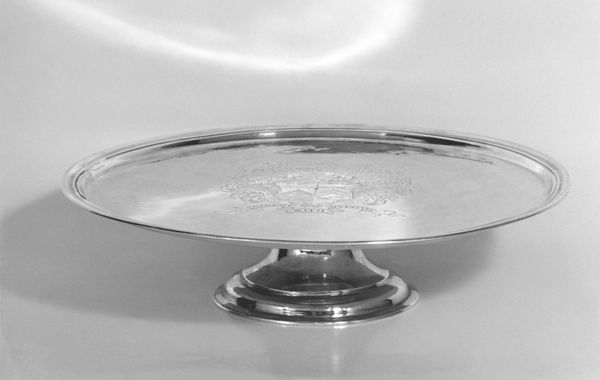
ceramic, glass
#
ceramic
#
glass
#
ceramic
#
decorative-art
Dimensions: H. 4 1/2 in. (11.4 cm); Diam. 9 3/4 in. (24.8 cm)
Copyright: Public Domain
Editor: Here we have a glass vase, crafted between 1886 and 1888 by the New England Glass Company, currently residing at The Met. The contrasting textures and pale coloring give it an ethereal quality. What do you make of its design? Curator: From a formalist perspective, the vase presents a compelling study in contrasts. The clear glass rim and base are juxtaposed with the frosted body, creating a play of transparency and opacity that immediately draws the eye. Note how the scalloped edges aren't merely decorative; they actively engage with the light, fragmenting and redistributing it across the form. Editor: It's almost like the rim is actively distorting the light. Does the form influence the function, or vice versa? Curator: A question that goes to the heart of the applied arts. Consider how the curvature of the vase leads the eye around and around, emphasizing its volume. Also, observe that the balance, while visually pleasing, is subtly precarious. Is the bulbous body truly supported by the delicate base? Editor: I see what you mean. The interplay of heavy and light, clear and frosted, definitely creates a sense of visual tension. It seems intentional. Curator: Precisely. The artist is inviting us to engage with the object on a purely sensory level, prompting questions about weight, volume, and light. The form precedes function. Are there other formal devices you note? Editor: The scalloped edges mimic each other – on the base and the rim – thus visually unifying the design... something I missed initially! Thanks, that's given me a whole new appreciation for this piece. Curator: Indeed. Appreciating the nuanced composition of materials lets one experience the underlying language of visual forms.
Comments
No comments
Be the first to comment and join the conversation on the ultimate creative platform.
